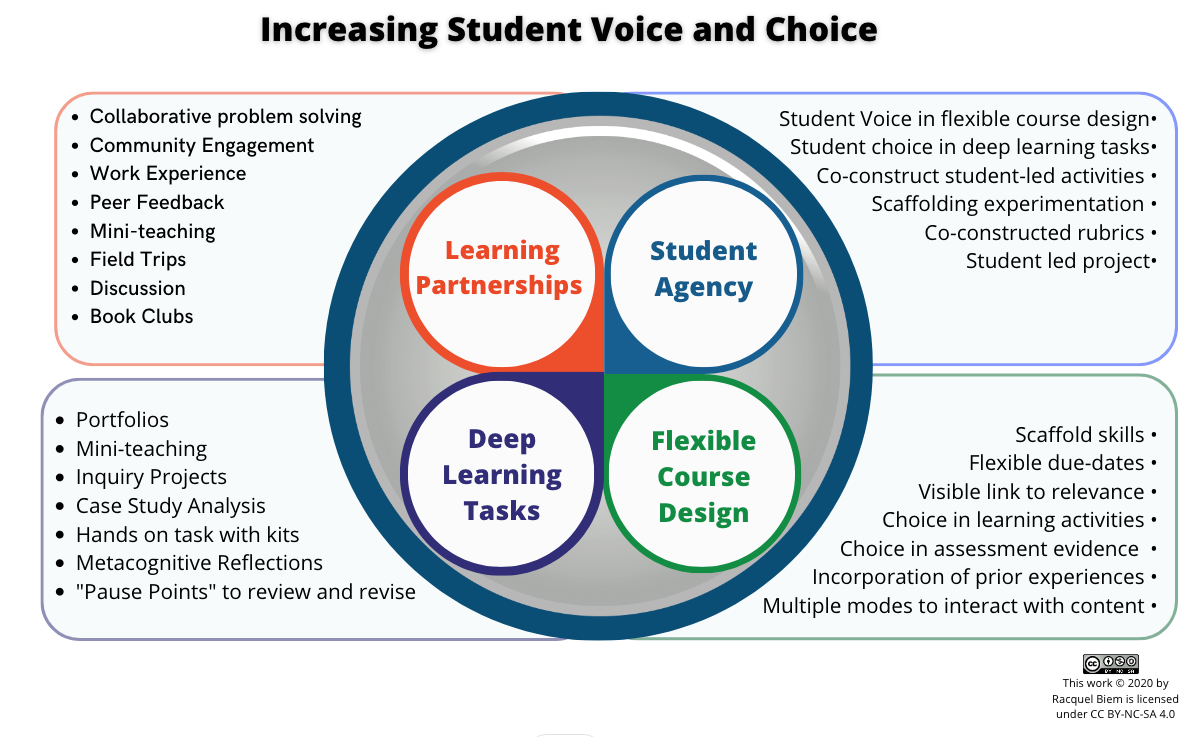Participatory Learning: Transfer so the ideas stick longer than popcorn on shoes
Instructors can be effective role models and offer students the opportunity to observe a master at work. A useful approach to teaching a process when accompanied by explicit description of the choices, rationale, solution steps and other metacognitive knowledge, particularly when involving dangerous procedures requiring expert skill for safety reasons. Such metacognitive pieces are key for students to see why a particular formula was used, and the pre-empting the common question of “where did you get 4 from?” when a step is skipped. Students can even be asked what the next step should be, or what the best approach to take given the information so far; although instructors facing mortal danger should be willing to challenge and explain rather than demonstrate what happens if enacting problematic suggestions.
However, there is something curious about having the individual who needs the least amount of practice doing the work while a room full of novices watch. So why might novices benefit from participatory learning within the BOPPPS model:
Repetition for Memory Formation
Practicing skills involves shifting from abstract ideas into specific procedural knowledge, while repetition of concepts related to knowledge learning outcomes forms stronger memories. Working through several contextual examples also stretches our conceptions and strengthens links the current learning with other procedural and declarative memories.
Variation for Transfer of Learning
The practical question of why we bother to teach is often answered by a refrain that students will need to know this material for use later in the program (4th year project or course 4XX) or when they… are professionals in the field. We do not teach so that students can simply solve problems the textbook. We are aiming for a transfer of learning, where students can apply skills and knowledge learned within one situation to another situation (e.g., Perkins & Salomon, 1992). This transfer can occur to contexts that either closely resembles the current situation such as solving problems in another class (termed “near transfer”) or to a very different situation or context such as research project or professional scenario (termed “far transfer”). Zack Williamson and Julie Schell from the University of Texas Austin provide a overview of near and far as well as what it means to take these low and high roads! How widely do we want our students to be able to apply these skills and knowledge?
Intervention for Preventing the Solidification of Misinformation
Lecture may convey the information and steps, but without practice I do not get to see what misinterpretations or gaps remain in students’ knowledge when they try to implement the lesson.
Having student work on selecting a statistical test during our time together means they can ask about uneven samples, I can catch misidentification of data type as categorical, or skipping assumption testing, and I can identify common gaps across students and quickly address with just-in-time feedback and instruction.
Giving time in-class, saves me and the students time overall compared to the lecture-only approach – something I realized after marking end-of-week assignments where multiple students make simple errors that required noting, tracking and highlighting common errors back to the student, followed by helping students unlearn these problematic misunderstandings that were engrained through repetition during the assignment and were already interfering with learning the next week’s content.
Instead, I and the students catch the errors early and quickly. Assignments show fewer simple errors and can be more complex if challenge is required.
Drawing on Prior Knowledge & My Expertise in Engaging Ways:
Active participatory learning values student’s prior knowledge, makes use of that prior knowledge saving time spent bringing everyone up to the same level, increases the meaningful effort done by students, and draws on their motivations when problems are of interest to them, and tempts them into seeing themselves as members in my discipline.
I like to think I can lecture reasonably well, but I know where I excel is detecting patterns that show where students collectively or individually struggle. If I lecture, I do not get to use my hard-earned and flexible expert knowledge to explain the nuanced considerations that occur when selecting a statistics analysis or determining the data type. While facilitation is not easy, it is less repetitive (an more intriguing) than marching individuals through with explicit directions for each step. Lastly, having them talk more and me less means a less dry mouth.

